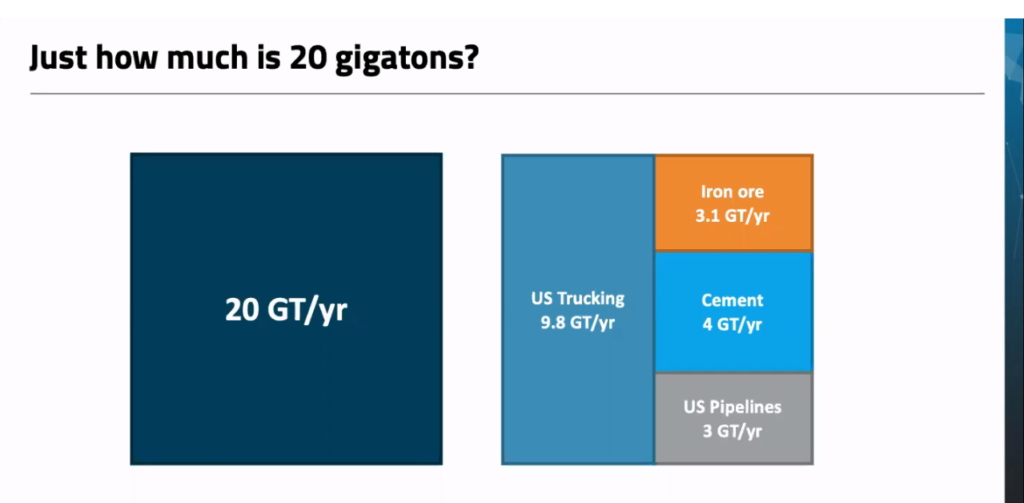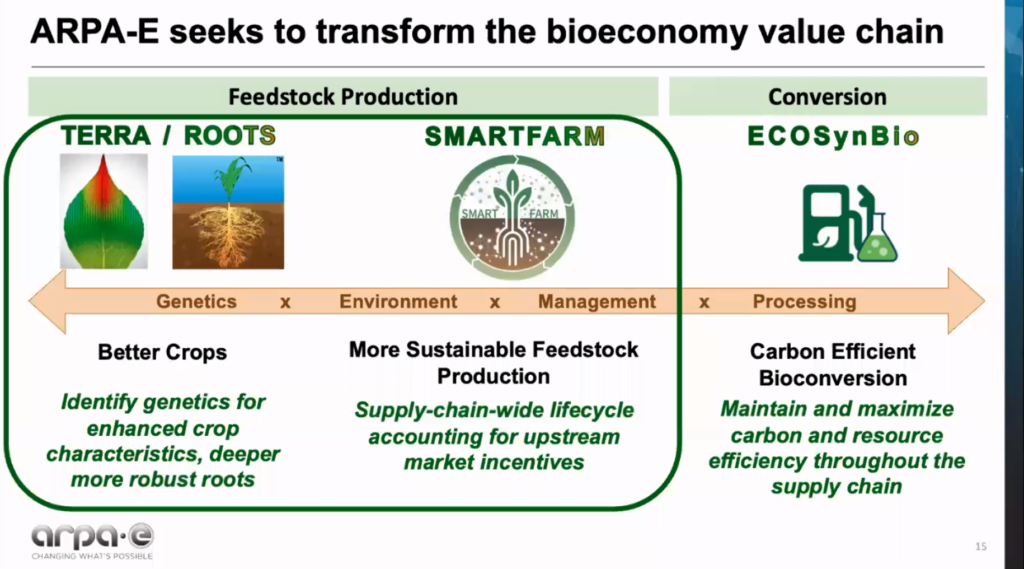

Thanks to all of you who attended the recent webinar with Dr. David Babson, Program Director, Advanced Research Projects Agency – Energy (ARPA-E). The title of his talk was “Changing what’s possible for a sustainable future,” which included a topic that is top of mind for many involved in the fuels arena — reaching net negative fuels and incentivizing carbon optimization. Following are a few highlights from the discussion.
“We need to think about establishing negative emissions pathways immediately and to grow them quite rapidly. In fact, we need to achieve about 10 gigatons of negative emissions by 2050. And by 2100, global negative emissions will need to be on the order of 20 gigatons per year. And to give you a sense of just how big 20 gigatons is, if you were to add up all of the material flows in U.S. trucking, all the packages that are transported by trucks and the Amazon boxes and those sorts of things that are delivered, that would only be about 9.8 gigatons. To get to 20, you would need to add on top of that all the material flows through US pipelines, oil and natural gas, and those sorts of material flows, as well as global cement and global iron ore. These combined would be 20 gigatons [shown in a screenshot from the presentation below].

This is to highlight the fact that one of the largest industries on the face of the earth by 2100 is going to be carbon removal and management. And therefore, from the Department of Energy standpoint, we are very interested in ensuring that the technologies that service this future are very large, perhaps the largest industry on the face of the earth, are serviced with technologies that are both low cost and energy efficient.
We’re looking at a number of different types of technologies, including biological solutions, whereby you would leverage the natural cycling of environmental systems to remove and store and manage carbon. We are looking at engineered solutions like direct air capture, direct ocean capture, unique types of utilization, conversion chemistries that would store carbon in our built environment, or technologies like enhanced weathering and mineralization that could be engineered solutions.
We’re also looking at hybrid solutions that are capable of, again, leveraging that natural, biological carbon cycle through the accumulation of biomass, but whereby you would couple that Ag sequestration and biomass to a downstream conversion or capture process that would allow you to store carbon without it getting back into the atmosphere. This can include things like bioenergy with carbon capture or storage or building materials or biochar.”
“We are creating the opportunity space to not only provide lower carbon fuels and chemicals and products and materials for the economy is important, but also providing standalone negative emissions technologies are going to be critical for achieving both robust markets that are efficiently incentivizing sustainability, and also in achieving ambitious climate targets for the lowest cost per unit carbon.
Now, with respect to this new carbon economy, this bioeconomy, ARPA-E is seeking to transform the value chain. And we recognize that the best way to ensure that we can produce and synthesize fuels and chemicals and products that are not just lower carbon, but carbon negative, is that we need to take a supply chain approach and actually implement new technologies up and down the bioeconomy supply chain. And we have done that.” [Following below is a summary of key ARPA-E programs discussed by Dr. Babson in the presentation.]

“Another area that I’m looking at is what the future of refining looks like. How do we design systems that can accommodate more heterogeneous and dynamic feedstocks, while simultaneously producing necessary products and accommodating external reducing equivalents, or even generating power and providing CCS. And the vision for this is that we really need to rethink biorefining.
One of the natural types of conversion processes that we’re looking at as a means to identify engineered approaches is anaerobic digestion. Anaerobic digestion is a thermodynamically driven, naturally occurring process that converts complex polymers and polysaccharides, lipids, and proteins into very homogeneous methane and CO2 biogas outputs.
Now, the specific conversion processes that occur and the multiple microbial reactions that occur are really unique and provide an opportunity to be exploited in unique bio refining ways that are more controllable and will allow for the synthesis of more diverse products, while accommodating more heterogeneous and dynamic feedstocks. And so we don’t need to think of anaerobic digestion as we have in the past, as being something that we allow to occur passively and only related to waste or wastewater, what have you.
But we could actually begin thinking about how we can combine farm feedstocks and waste residues and those sorts of things in a truly circular economy to reimagine the refining industry. So imagine transitioning from even optimized anaerobic digesters to a biorefinery that is built on anaerobic, thermodynamically-driven processes, but provides way more services and products than just biogas.
It could include things like grid stability or renewable natural gas, fuels, chemicals, nutrients, and even carbon capture and storage. And so there’s a lot of research that is needed here. This is an area that I’m trying to workshop for new programs. And our investments in this space could include anything from reactor design to carboxylic acid separation, those sorts of things.”